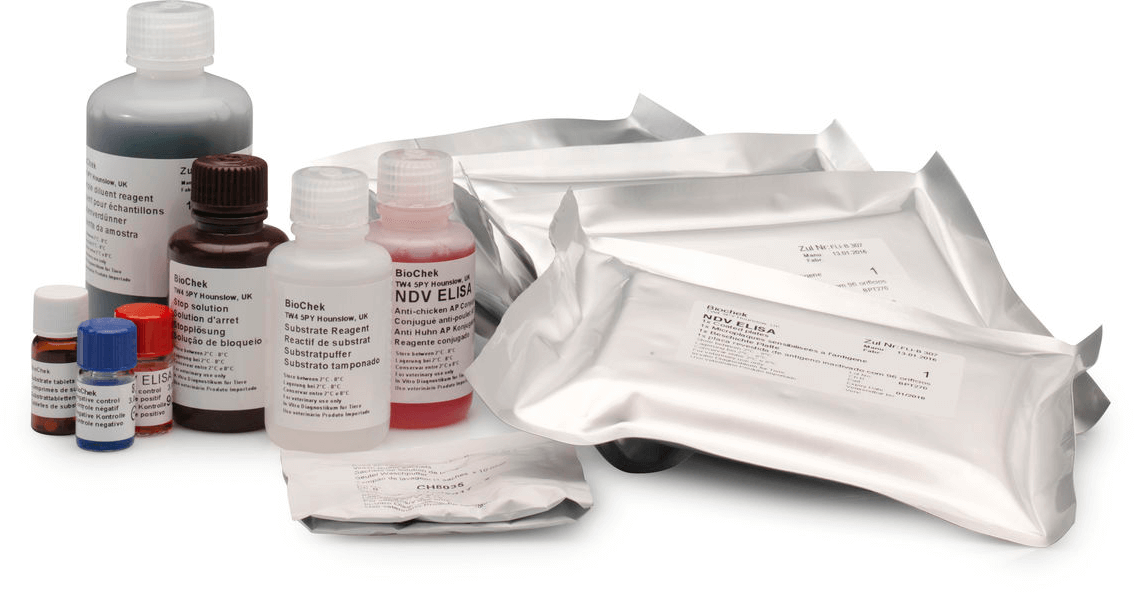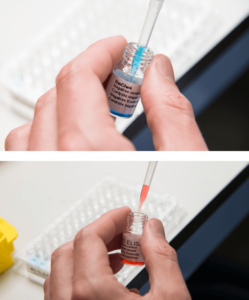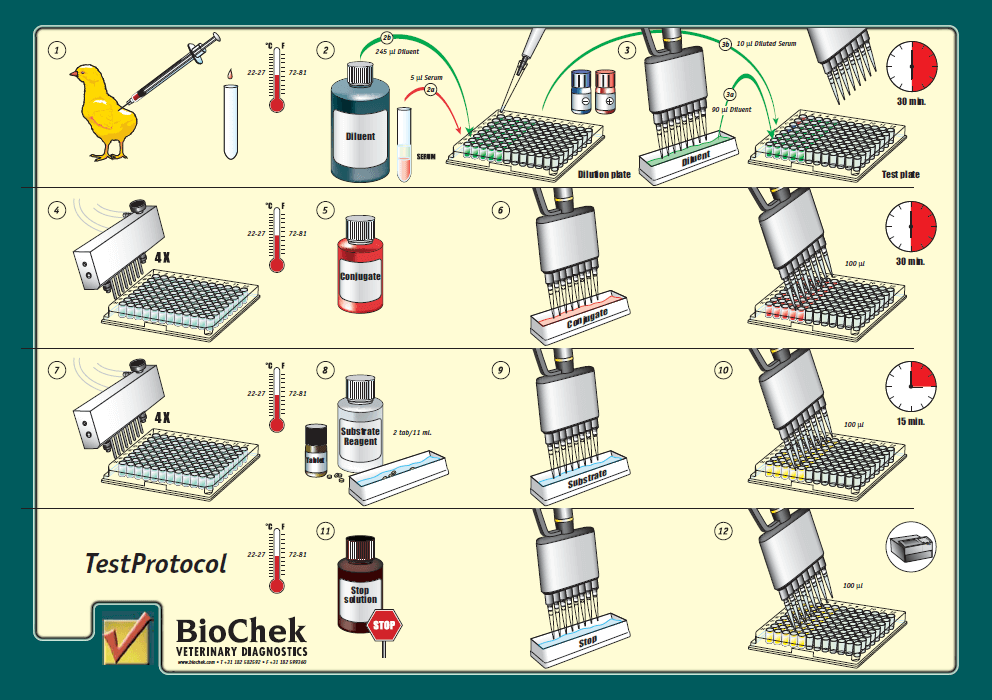BioChek provides diagnostic ELISA tests for swine and poultry, as well as a range of ELISA accessories such as positive and negative reference controls.
- Click here for all ELISA poultry tests
- Click here for all ELISA swine tests
- Click here for more information on PCR
Read more about our ELISA test kits below.

BioChek ELISA Kit Components:
- Coated Plates
- Negative and Positive Control
- Sample Diluent Reagent
- Wash Buffer Sachets
- Conjugate
- Substrate
- Stop Solution
- Kit Insert
- Certificate of Analysis
Coated Plates
- Coated with antigen
- Sensitive to moisture (be careful with storage of partially used plates)
- Always check the desiccant pouch on opening aluminium wrapper
Sample Diluent Reagent
- Reduces a specific binding
- Dilute samples 1:20/50 (swine) or 1:100/500 (poultry)
Wash Buffer Powder
- PBS + Tween 20
– Reduce a-specific binding - Dissolve 1 sachet in 1 liter of distilled water
– Not necessary to rince out the sachet
– Use a glass/transparant bottle with an airtight lid
– Buffer is crystal clear (like water) - Cover and store for minimal 4 weeks
Conjugate
- Anti-chicken/swine antibody labelled with APP (Enzyme)
- Conjugate is an active compound
- Temperature sensitive
- Prevent heat/cooling cycles!
– Only warm up what you need - Batch specific
Substrate
- Substrate reagent + tablets
- Make sure tablets are completely dissolved
- Preferably use fresh substrate
– 15 minutes to desolve - Or keep cool and dark and use for one week
- If buffer turned yellow before usage, discard it and prepare new one

Kit Controls
NEGATIVE (Blue)
- SPF negative serum
- Swine: assay and batch specific
POSITIVE (Red)
- Assay specific antibodies
- Batch specific
Stop Solution
- Strong alkaline solution stops the reaction (not 100%)
- Read plate within 30 minutes
General ELISA tips
- ELISA is susceptible to time, temperature, light, movement and performance of protocol, so there are many influencers on the outcome of the test. Assessing sample results only will not give guarantee the results are valid.
- Avoid pipetting small volumes: adding 1 ul serum to 500 ul diluent comes with great risk of being inaccurate and inprecise
- To increase accuracy and precision, it is recommended to split the sample dilution into 2 steps.
– Step 1: 5 ul sample and add 245 ul diluent (1:50)
– Step 2: 90 ul diluent and add 10 ul of 1:50 diluted samples (1:10) - 1:50 x 1:10 = 1:500
- By reducing test variation, it allows the veterinarian to do more meaningful interpretation of the results
- Get reliable results:
– Correct method
– Good technique
– Good equipment
– Reference control






